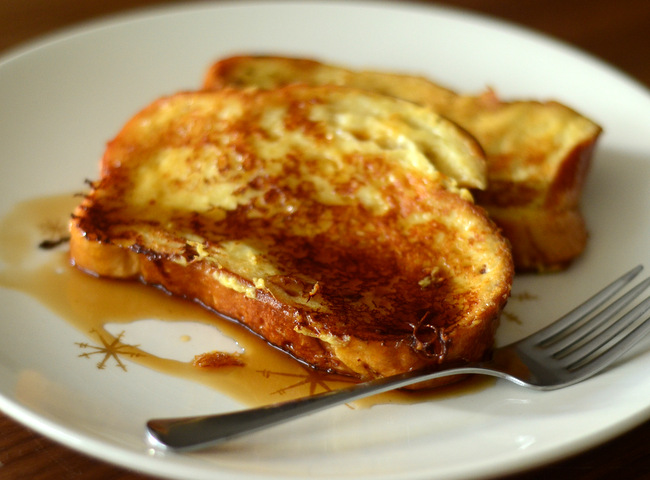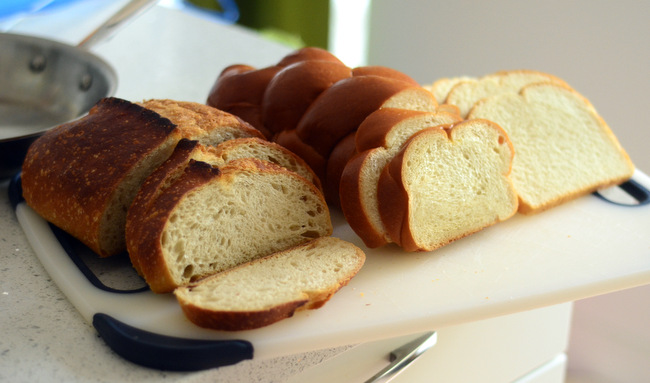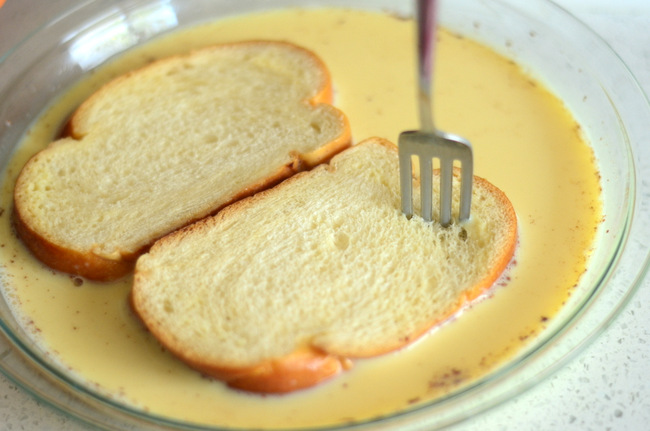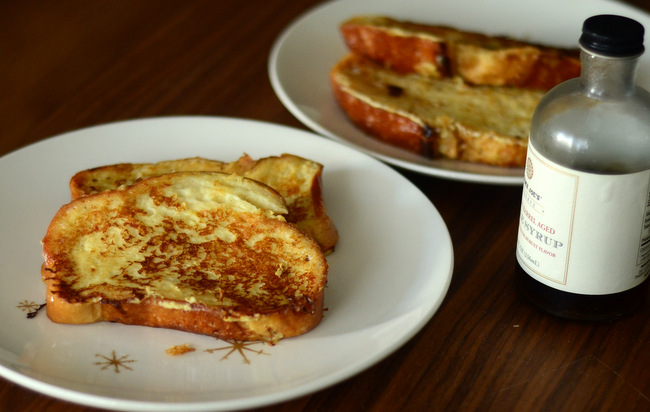French toast is the kind of weekend brunch dish that you can spend the whole week looking forward to. Whether you drizzle yours with maple syrup or dust it with powdered sugar, the custardy bread can be absolutely delicious when done well. The most important part of French toast? The bread, since it’s the base for the whole dish. That leaves us one question: What is the best bread for French toast?

What is the best bread to use for French toast?
You can actually use any kind of bread to make French toast, from a thin baguette to a fluffy white bread to a dense whole grain loaf.
That said, you can’t use just any bread and expect to get the best French toast. Some breads are simply better than others and, if you’re looking to make a truly wow-worthy French toast, you need to be picky. Let’s look at some bread options to pick out a winner.

Rich vs. Lean Breads
Rich breads have butter, oil or eggs added to them. Brioche and challah fall into this category. They have tight, even crumbs and a soft texture. Their tight crumb soaks up the egg custard evenly and has enough structure to stay together when you flip the French toast on the griddle.
Lean breads are made without any fat (or minimal fat) in the dough. Baguettes, sourdoughs and other “rustic” breads fall into this category, with dark crusts and irregular crumbs that are full of holes. Lean breads don’t hold the custard as well as rich breads and often have a thick crust that’s difficult to soften during cooking.
The verdict
Rich breads are better than lean breads for making French toast.
There are breads that fall in between these two ends of the spectrum. These have some fat added to the dough to produce a softer crumb, but still not as much fast as you’d find in a buttery brioche. Sliced sandwich breads typically occupy this middle group and, with their even crumb, tend to also be a good base for French toast.

Stale vs. Fresh Bread
In French, this breakfast favorite is called “pain perdu,” or “lost bread,” because the cooking method can give new purpose to stale bread. Soaking stale bread in an egg-and-milk mixture moistens it, and after it’s fried, you’d never know that it was stale.
While you can use stale bread, you certainly do not need to. Stale bread does not soak up substantially more liquid than fresh bread, so your toast will not be more moist for using it. It also can have quite a hard crust, depending on the type of bread you are working with, and that crust can be difficult to soften even after a long soak in the custard mixture.
The verdict
Fresh bread is simply easier to work with, and you don’t need to wait for it to become stale.

Thick vs. Thin Slices
In some restaurants, you’ll see French toast that is nearly an inch thick, which makes an impressive stack on the plate. Thick sliced bread may look good, but it can actually cause some problems when making French toast.
If the bread doesn’t soak long enough, the custard won’t penetrate to the center of the slice, producing a dry, bland French toast. If the bread soaks for too long, it may not cook completely without the exposed top and bottom burning, resulting in a very soggy breakfast.
Thin slices of bread also pose some difficulties. If the bread is soaked too long, it may tear under the weight of the custard and start to fall apart on the way to the frying pan!

The verdict
For best results, start with an unsliced loaf of bread so that you can cut slices that are thicker than your average slice of sandwich bread, but thinner than the “Texas toast” style that can be tricky to soak and cook properly.
If you use sliced sandwich bread, you don’t have much control over the size of the slices, and you will need to take care not to over-soak the bread. If you use thick bread, use a fork to poke holes in it to help the custard penetrate to the center of each slice.
Whole Grain vs. Non-Whole Grain
While whole-grain breads can be used for French toast, the flavors that they bring in aren’t always a welcome addition. Some whole-grain breads have a mild nuttiness that makes the dish even more delicious, but others have a coarse texture and strong flavor that overwhelms the subtle milk and egg flavors from the batter.
Though gluten-free breads don’t use any whole wheat, they do share many grains with whole grain breads, so I will mention them here. If you use gluten-free bread, still look for a loaf with a soft, tight crumb. As is the case with whole-grain wheat breads, strongly flavored flours can detract from the overall taste of French toast as an indulgent breakfast dish.
The verdict
In this category, it really comes down to personal preference, but most of the time a milder bread or a non-whole grain bread is going to make a tastier, more traditional French toast.

So, the best bread to use for French toast is…
Soft, rich breads like challah and brioche are the best for making French toast.
Both brown up evenly and lend layers of extra flavor to the dish. The butteriness of brioche makes it even more delicious if you need help choosing between the two
If possible, choose a bread that is not already sliced so that you can control the thickness and make French toast that’s neither too thick nor too thin.
Of course, I could also say that whatever bread you have in your pantry when a craving for French toast strikes is the best, as it’s the one that will let you to make French toast the quickest… But you’ll be the most satisfied if you plan out your breakfast by picking up a good loaf in advance.

Share tips, start a discussion or ask one of our experts or other students a question.
No Responses to “What Type of Bread Makes the Best French Toast?”